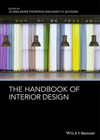Boston Overview
Boston is sometimes accused of having an inferiority complex compared to New York City, its larger, louder neighbor to the south. There’s a hint of jealousy in one of Boston’s many nicknames, “the hub of the universe,” but Beantown, a more humble moniker that refers to a dietary staple during colonial times, has several sides to its personality. Today, Boston has more art and culture venues per capita than its southern neighbor—and architecture that’s every bit as good. This is reflected in yet another sobriquet: “The Athens of America.”
The Puritans founded Boston in 1626, just six years after the Mayflower landed in nearby Plymouth, Massachusetts. In the nearly four centuries since, the city has grown to encompass 49 square miles. While this compact area is home to roughly 570,000 people, the larger metropolitan region—which includes the adjacent cities of Cambridge, Somerville, Brookline, and others—counts nearly 6 million.

Photo courtesy Greater Boston CVB/ FayFoto
The Old State House, built in 1713—and decommissioned in 1798—it was here that the Declaration of Independence was first read publicly in Massachusetts on July 18, 1776.
Boston’s history is often tied to its role during the War for Independence, but in the late 19th century the city came into its own as a cultural and architectural center. During this flourishing era, it founded Massachusetts College of Art, the nation’s first and only publicly funded art school; Frederick Law Olmsted laid out the Emerald Necklace, a system of linked parks throughout the city; the Museum of Fine Arts (MFA), one of the finest museums in the world; Isabella Stewart Gardner began building the exquisite art collection that was to become her namesake museum; and Boston gained two of its best buildings, H.R. Richardson’s masterpiece Trinity Church, and the Boston Public Library, by McKim Mead and White.
The MFA, the Gardner, the main library, and Trinity Church are all located in Boston’s Back Bay neighborhood—one of the city’s two main culture centers. Here, along Newbury Street, art galleries shoulder space with bookstores, cafés, and fashion boutiques. Boston’s other cultural hub is its South End. There, a converted warehouse at 450 Harrison Avenue is home to more than a dozen galleries that specialize in cutting edge work by up-and-coming artists.
Cambridge, Massachusetts, on the north side of the Charles River, is best known worldwide as the home of Harvard University and the Massachusetts Institute of Technology. But it’s also considered one of the most literary cities in the nation, due to the number of esteemed writers who have lived there and its concentration of bookshops. The city is also home to some of the Boston area’s best 20th century architecture: Modernist and Brutalist works by the likes of Eero Saarinen and Le Corbusier.
With the 2006 opening of Diller Scofidio + Renfro’s new home for the Institute of Contemporary Art, Boston remains a city that’s once again on the cusp of another golden cultural age. It sits not far from the southern anchor of Boston’s 21st century emerald necklace: the Rose Fitzgerald Kennedy Greenway, rising on the site of a now-demolished elevated highway that had separated downtown from its waterfront. Construction on this mile-long stretch of parkland, parts of which are already open, is expected to finish in the fall of 2008.


